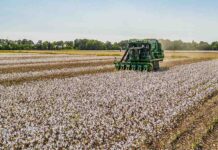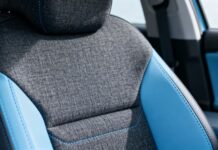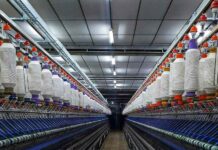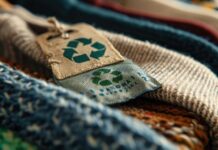The global market for lightweight materials in electric vehicles is projected to reach $26.19 billion by 2030, expanding at a compound annual growth rate (CAGR) of 19.17%. This trajectory represents one of the most dynamic market opportunities in the automotive supply chain, fundamentally reshaping competition and innovation among textile manufacturers.
The Physics Behind Weight Reduction
The compelling economics of EV lightweighting stem from battery mass. Modern EV battery packs average 6-8 kilograms per kilowatt-hour (kWh). For a typical 100 kWh battery system common in contemporary EV platforms, this equates to 600-800 kilograms of vehicle mass dedicated solely to energy storage. Consequently, there is an urgent need to reduce mass everywhere to extend range, minimize battery pack size (with associated costs), and enhance vehicle acceleration and handling characteristics.
Traditional automotive textiles were engineered mainly for comfort, aesthetics, and basic durability. In contrast, EV-grade textiles must fulfill these functions while also serving as structural reinforcements, thermal management systems, and weight-optimization enablers. This dual functionality fundamentally reshapes textile specifications across vehicle interiors and structural interfaces.
The relationship between weight and range is compelling: even a 10% reduction in vehicle weight can yield an additional 6-8 kilometers of driving range. For EV manufacturers, this means smaller battery packs. Given that battery costs represent the largest single expense in EV manufacturing at $150-200 per kilowatt-hour, reducing weight by just one kilogram enables approximately $900-1,600 in battery savings per vehicle—which is a substantial economic driver justifying investments in advanced textiles for electric vehicle lightweighting.
Advanced Textile Technologies Reshaping EV Design
Carbon Fiber Non-Crimp Fabrics (NCF)
Carbon fiber is the leading material for high-performance automotive applications, offering exceptional strength-to-weight ratios of 175 ± 25 kN·m/kg—five times stronger than steel while being significantly lighter. Non-crimp fabric technology eliminates the undulation present in traditional woven structures, allowing fibers to remain straight and parallel. This configuration increases fiber efficiency by 10-15%, enabling thinner and lighter composite layups for equivalent structural properties.
Multiaxial NCF configurations feature fiber layers oriented at 0°, ±45°, and 90° angles, allowing multidirectional force absorption without stretching. BMW’s i3 body structure exemplifies this technology’s potential, achieving a 50% weight reduction compared to conventional steel bodies through CFRP deployment. However, carbon fiber’s $15-25 per kilogram cost poses challenges for mass-market EV applications where cost competitiveness remains essential.
Basalt Fiber Composites: Cost-Effective Performance
Basalt fiber emerges as an economically viable option between glass and carbon fiber alternatives. Produced by heating volcanic basalt to 1500-1700°C and extruding it into filaments, basalt fiber manufacturing costs approximately 30-40% less than carbon fiber production while delivering comparable tensile strength (1000-3000 MPa) and superior temperature limits (300°C maximum).
Sandwich-weave laminates reinforced with basalt fiber achieve 20-25% weight reduction versus traditional PVC or thick foam upholstery systems, making basalt particularly appealing for cost-sensitive EV segments. Applications include seat frames, headliner reinforcements, and door panel cores—components where affordability is key without sacrificing performance.
3D Spacer Fabrics: Structural Innovation
Three-dimensional spacer fabrics represent a breakthrough in automotive lightweight construction. Unlike traditional 2D fabrics, spacer fabrics consist of two outer fabric layers connected by perpendicular spacer yarns (typically 5-6 millimeters apart), creating inherent void structures that combine structural performance with thermal insulation and acoustic damping.
A landmark case study showcases transformative possibilities: the Volkswagen UP! lightweight seat construction achieved 57% weight reduction compared to conventional designs. Traditional seat constructions—featuring steel frames and dense polyurethane foam—weighed 15 kilograms per front seat. The innovative spacer fabric approach brought this down to 6.5 kilograms per seat by using integrated glass-fiber thermoplastic prepreg skins and polyurethane-filled textile cores. This change eliminated 42.5 kilograms from total curb weight across five seats—translating into an additional 2.5-3.4 kilometers of range.
Additional manufacturing benefits include reduced post-processing waste, integrated functionality that removes separate bonding steps, optimized comfort through inherent air permeability, and simplified end-of-life recycling through distinct layer separation.
Market Growth Drivers and Geographic Dynamics
The lightweight textiles market showcases robust growth across varied forecasting methodologies. Inkwood Research anticipates an increase from $10.87 billion (2024) to $26.19 billion (2030), while Verified Market Reports predicts an 11.56% CAGR through 2033. While variations reflect different segmentation strategies, all trajectories illustrate a clear upward trend.
A specialized segment—hybrid fabrics combining carbon and aramid fibers—is expected to grow from $565.5 million (2025) to $2,327.8 million (2035) at a 15.2% CAGR. This robust expansion mirrors OEM commitment to premium EV segments (sports cars, luxury vehicles) where performance justifies higher material costs, as well as migration into mass-market segments as production economies of scale reduce unit costs.
The Asia-Pacific region holds 48% of global automotive textiles market share, fueled by China’s emergence as the largest vehicle exporter (especially EVs), India’s growing production capacity for cost-effective textiles, and competitive aerospace-grade composite textile hubs being established in Korea and Vietnam. North America, having outsourced production for years, is now reinvesting in lightweight composites due to U.S. Inflation Reduction Act tax credits promoting domestic sourcing for EV components.
Manufacturing Excellence and Standardization
Warp-knitting technology stands as the most productive and cost-effective option for high-volume automotive textile applications. Single warp-knitting machines can operate at speeds exceeding 2000 rpm (40-60 meters per minute), providing production capacity equivalent to 3-5 traditional looms. Double-bar Raschel machines facilitate the creation of complex 3D spacer fabric structures with independently controlled layers.
Optimizing fiber volume fraction—the proportion of fiber in relation to total composite volume—generally falls within the 40-45% range for automotive applications, balancing strength requirements with weight optimization and manufacturability constraints. Research on aramid/glass hybrid composites has shown optimal fiber volume fraction at 40.3-40.8%, with void content tolerance below 2% being critical for crash protection.
Rigorous testing standards govern automotive textile performance. ISO 13934-1 specifies tensile strength (300-500 N/5cm minimum), ASTM D6413 addresses flammability requirements, and DIN EN ISO 5084 outlines thickness measurement standards. Premium EV manufacturers necessitate supplier certification to DIN EN ISO/IEC 17025 and TISAX® (Trusted Information Security Assessment Exchange).
Economic Analysis and Cost Dynamics
Material cost comparisons reveal significant trade-offs. Traditional PVC and foam average $8-12 per kilogram with 1.8-2.1 g/cm³ density. Glass fiber composites range from $5-8 per kilogram; basalt fiber from $8-11; carbon fiber from $15-25; natural fiber composites from $10-15; and full 3D spacer fabric systems from $12-18. Despite the higher costs of textiles—occasionally 50-100% premium versus traditional materials—OEMs justify adoption through significant battery cost reductions and compliance with regulations.
EU emissions regulations impose a €95 per gram CO₂ penalty for exceeding targets, creating strong financial incentives for achieving weight reduction. Regulatory benefits can reach €5,000-15,000 per vehicle in avoided penalties, and combined with $900-1,600 battery cost savings per kilogram of weight reduction, the economic rationale becomes clear despite the investment in premium materials.
Sustainable Textiles and Circular Economy Integration
Sustainability mandates for EVs—driven by EU emissions regulations targeting a 55% reduction by 2030—are reshaping textile sourcing to align with circular economy principles. Recycled polyester fibers from post-consumer textiles provide a 30% reduction in carbon footprint compared to virgin polyester, typically costing 15-25% less than virgin resin. Leading OEMs are now requiring a minimum of 20% recycled content in automotive textiles by 2030.
Natural fiber composites—sourced from hemp, flax, jute, and kenaf—are transitioning from niche uses to mainstream EV components. Integration into models like the BMW i3 and Mercedes-Benz EQ includes flax fiber door panels, hemp-polyester door linings, and kenaf fiber seat backing. Natural fiber composites generally display densities of 1.3-1.5 g/cm³ (15-20% lighter than glass fiber equivalents) with 40-60% lower production emissions, though price premiums of 10-15% remain.
Strategic Imperatives for Textile Manufacturers
Textile industry leaders are now faced with critical strategic decisions. Transitioning from commodity fabrics to performance textiles specifically designed for EV lightweight structures is imperative, as demand for traditional automotive upholstery declines by 3-5% annually while lightweight composite textiles see growth exceeding 15% annually. Investing in advanced fiber hybridization, optimizing 3D spacer technologies, and sourcing fibers that adhere to circular economy principles will become essential competitive differentiators.
Building supply chain partnerships with EV OEMs and Tier-1 suppliers concentrates purchasing power among 5-10 global manufacturers, presenting both opportunities and challenges. Achieving regulatory compliance through accreditation (ISO 17025, TISAX, OEM-specific qualifications) poses critical barriers to market entry. Positioning sustainably through certified offerings appeals to brand-conscious EV manufacturers and consumers.
Future Innovation Directions
Textiles integrated with carbon nanotubes promise electrical conductivity for improved thermal management and a 20-30% increase in strength relative to traditional carbon fiber materials. Graphene-enhanced composites offer exceptional thermal conductivity and embedded damage detection. Smart textiles incorporate temperature regulation through phase-change fiber yarns and provide occupancy sensing via pressure-sensitive spacer fabrics. Additive manufacturing techniques for textile preforms enable complex geometries with variable density designs, optimizing material placement around stress concentrations.
Conclusion
Weight reduction through advanced textiles represents a fundamental value driver for EV competitiveness. The $26+ billion lightweight materials market, expanding at 19% CAGR, signifies not just a market opportunity but a strategic restructuring of automotive supply chains. Textile manufacturers that successfully lead in EV-focused lightweight composites, secure valuable OEM relationships, and develop sustainable production capabilities will shape the future of automotive innovation over the next decade. The technical capabilities are in place, market demand is undeniable, and the window for strategic positioning is currently open but closing quickly.


































